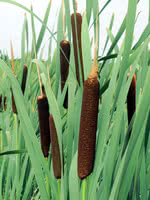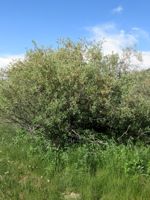Mon-Fri 9am - 5pm Mountain time
Common Cattail vs Diamond-Leaf Willow
Typha latifolia
Salix planifolia
CUSTOM GROW
CUSTOM GROW
Cattail is found all across North America, growing next to water. Like other waterside plants, Cattail provides erosion control and forage for animals.
It is suitable for land reclamation. Cattail is able to tolerate cold weather and occasional flooding.
Diamond-Leaf Willow is a native deciduous shrub known for its glossy diamond-shaped leaves, which give the shrub its name. Its catkins emerge in spring, providing an important early source of pollen for pollinators. The shrub’s dense growth also offers valuable cover and browse for wildlife, including moose and deer.
This shrub is well-suited to cool, moist habitats such as wetlands, streambanks, and forest openings. It spreads by rhizomes, helping to stabilize soils and form dense thickets. Diamond-Leaf Willow is valuable for reclamation, wetland enhancement, shelterbelt plantings, and a wide range of conservation and habitat restoration projects.

